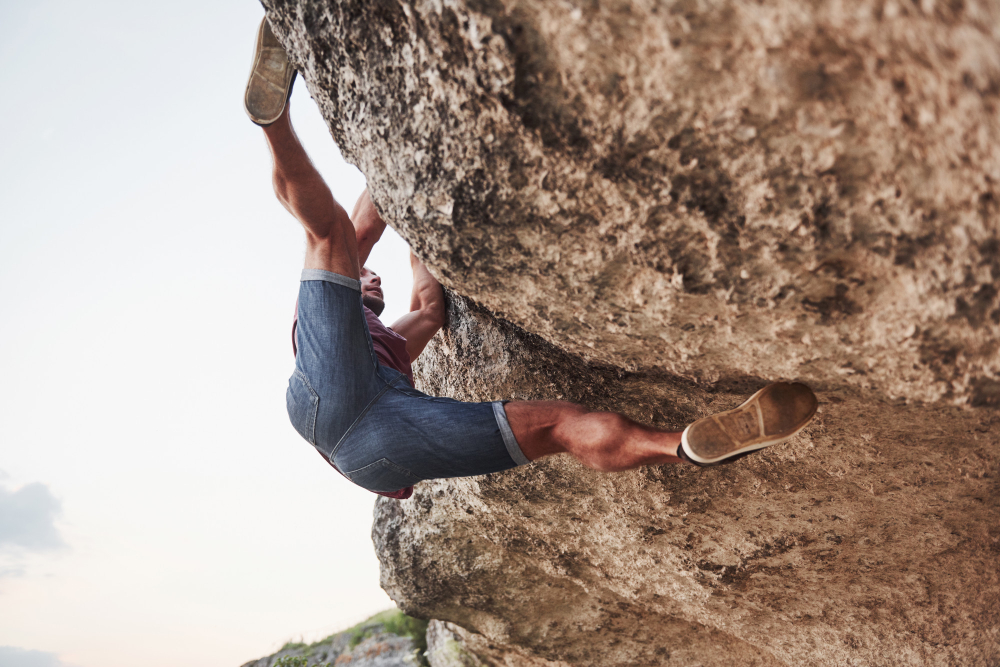Free climbing is not just a sport; it’s a lifestyle, an art form, and a passion that drives climbers to push their limits and explore the vertical world. Unlike other forms of climbing that rely on artificial aids or assistance, free climbing is characterized by the use of only hands, feet, and physical strength to ascend rock faces, cliffs, or indoor climbing walls. With its emphasis on skill, technique, and mental focus, free climbing offers a unique and exhilarating challenge for climbers of all levels.
Understanding Free Climbing
At its core, free climbing is about freedom—freedom of movement, freedom of expression, and freedom from artificial constraints. Climbers use their hands and feet to grip holds and footholds on the rock surface, relying solely on their strength, agility, and problem-solving skills to navigate routes and reach the summit. Unlike aid climbing, where climbers use gear such as ropes, harnesses, and mechanical devices to assist in ascent, free climbers eschew reliance on external aids, instead relying on their own physical abilities and mental fortitude to conquer challenging terrain.
The Art of Movement
Free climbing is as much about technique as it is about strength. Climbers employ a variety of movement techniques, including stemming, smearing, edging, and crack climbing, to ascend different types of rock formations and surfaces. Proper footwork, balance, and body positioning are essential for efficient movement and conserving energy on long climbs. Additionally, mental focus and problem-solving skills are crucial for assessing routes, identifying holds, and making split-second decisions while navigating complex sequences of moves.
From Bouldering to Big Walls
Free climbing encompasses a wide range of disciplines and styles, each with its own unique challenges and characteristics. Bouldering, often considered the purest form of free climbing, involves climbing short, powerful routes or “problems” without the use of ropes or harnesses, relying solely on crash pads for protection. Sport climbing, on the other hand, involves ascending longer routes equipped with fixed bolts or anchors for protection, allowing climbers to focus on movement and technique without the added stress of placing gear.
A Test of Traditions
Traditional climbing, or trad climbing, is a style of free climbing that involves placing removable gear, such as cams, nuts, and hexes, into cracks and crevices in the rock for protection. Trad climbers must possess strong technical skills and route-finding abilities, as well as the ability to assess and manage risks associated with placing and removing gear while on lead. Trad climbing offers a sense of adventure and self-reliance, as climbers forge their own path and establish their own protection as they ascend.
The Ultimate Test of Skill and Nerve
At the extreme end of the free climbing spectrum lies free soloing, a daring and controversial discipline in which climbers ascend without the use of ropes, harnesses, or protective gear. Free soloing requires an unparalleled level of skill, confidence, and mental focus, as even the slightest mistake can have catastrophic consequences. While free soloing is undoubtedly high-risk, it also offers a profound sense of freedom and purity, as climbers experience a direct and unfiltered connection with the rock and the void below.
Mitigating Risks in Free Climbing
While free climbing offers unparalleled freedom and exhilaration, it also carries inherent risks that must be managed with care. Proper training, experience, and judgment are essential for safe and responsible climbing practices. Climbers should always assess route conditions, weather, and their own physical and mental readiness before attempting a climb. Additionally, wearing appropriate safety gear, such as helmets, harnesses, and climbing shoes, can help minimize the risk of injury in the event of a fall or accident.
Reaching New Heights with Free Climbing
Free climbing is more than just a sport—it’s a lifestyle, a passion, and a way of life for climbers around the world. Whether scaling towering cliffs, navigating intricate boulder problems, or ascending sheer rock faces, free climbers embrace the challenge and adventure of the vertical world with courage and determination. As climbers continue to push the boundaries of what is possible in the pursuit of freedom and self-expression, free climbing remains a timeless and exhilarating pursuit that celebrates the human spirit and the indomitable power of the human body and mind.
